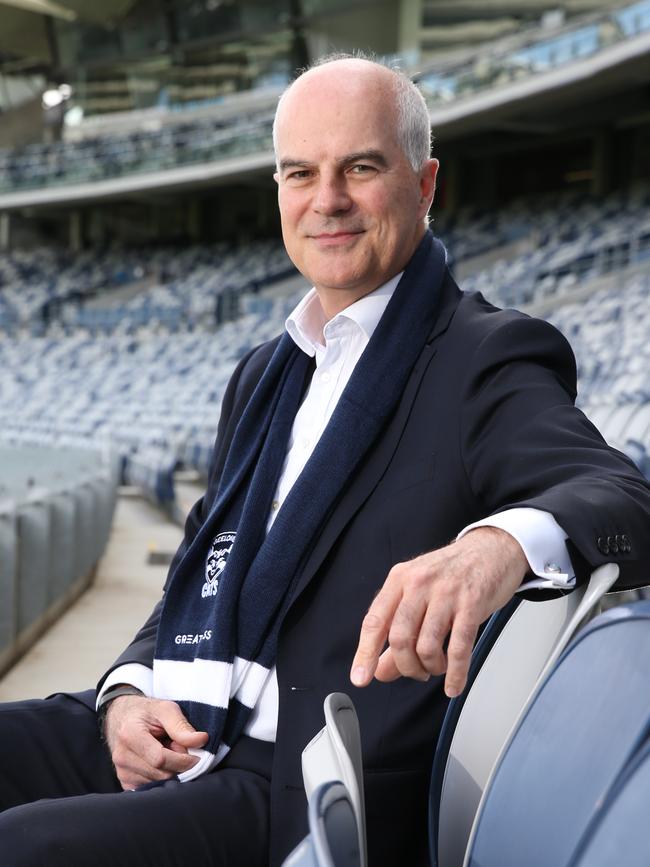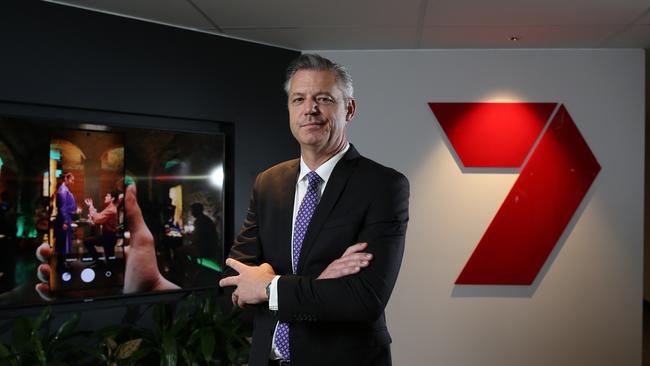Transurban’s boss Michelle Jablko has $10bn road ahead
The first internal CEO succession at Transurban shows just how much the toll road major has matured under Scott Charlton.

Business
Don't miss out on the headlines from Business. Followed categories will be added to My News.
The naming of investment banker turned finance boss Michelle Jablko as Transurban’s next chief executive marks a big milestone.
Jablko represents the first time Transurban has appointed an internal successor, which shows just how much the near 30-year-old toll road operator has matured under outgoing boss Scott Charlton. Like the infrastructure it operates, Transurban’s corporate headquarters is now doing some of its own longer-term planning.

Jablko joined Transurban in early 2021 as chief financial officer after nearly five years at ANZ as the bank’s finance boss, and before that with investment banks Greenhill and UBS. Her move to Transurban at the time was a clear succession signal. But this has given Jablko plenty of time to learn the company inside out and have a hand in developing Transurban’s current strategy.
For investors, the internal appointment will see corporate continuity. Critically this includes up to $10bn of acquisitions and road developments that will come under Jablko’s watch after she takes charge in October.
“Every CEO inherits a business, and the one I’m inheriting is in really great shape,” Jablko tells The Australian.
Jablko points out that under Charlton, Transurban has developed a shaper focus and that is to meet the transportation needs of fast-growing cities. Its markets of Melbourne, Brisbane and Sydney, as well as overseas in Canada and the Greater Washington region are forecast to have a population surge.
“Our cities and people are going to need more connections … they’re going to need more goods coming in out of the ports. And we think road transport should play an important part of that,” Jablko says.
Step change
Jablko takes charge of a massive cash machine suited for the times given it represents the ultimate hedge against inflation. She was speaking as Transurban delivered a 29 per cent jump in full-year 2023 earnings to $2.44bn. The increase came about on higher tolling revenue following an extra surge with inflation-linked increases. The operator also saw traffic growth as new roads such as the M8 Tunnel came online, although June quarter traffic trends were softer, particularly around its Sydney roads network.
Transurban, long loved by fund managers for its reliable payouts, delivered a full-year distribution of 58c a share. It is tipping this to rise to 62c in the coming year although given previous years’ performance this looks either underwhelming or simply highly conservative.
For Jablko the next five years represent a chance to deliver a step change for Transurban. These include the possible $1.8bn acquisition of Melbourne’s EastLink as well as the North East Link, which is currently being funded and built by the state government. Other projects include new connecting tunnels under Sydney Harbour, as well as major widening projects across existing roads in Brisbane as well as in Sydney. Jablko might even be the CEO who finally tackles the cracks on the ageing M2.

Jablko says the next few years will be about unlocking that growth opportunity in front of Transurban while continuing the ambition launched under Charlton of being a “trusted long-term partner” for all of its stakeholders, be it government or city drivers.
To get to her destination, Jablko will need to use her financing skills to negotiate a more expensive funding environment for some $24bn debt sitting on Transurban’s balance sheet. There’s still time ahead, the next big refinancing task is not until 2026, while the average length of debt it holds is around seven years.
Financially stretched governments are starting to pare back spending on mega infrastructure projects and switching out to social infrastructure such as housing or energy. There’s also the broader theme around how electrification of the nation’s vehicle fleet will change driving habits and the ability for governments to fund roads.
At the same time there is a push for the reform of the soaring cost of tolls, which is being led by the NSW government where Transurban has a key stake in eight of Sydney’s toll roads. Transurban has watertight contracts, but any reform could also represent an opportunity for the roads giant to simplify the tolling across its myriad of roads.

In the near term Jablko will need to find her owner CFO replacement, which is likely to trigger a reshuffle of executive ranks.
The first job of Transurban chairman Craig Drummond following his appointment last year was to find the replacement for long-term boss Charlton. Drummond began an external search as well as tested other internal candidates, including former WestConnex boss Andrew Head, who bowed out of the race several months ago. Jablko came out ahead on all the benchmarking.
As president of AFL club Geelong, Drummond has an extra incentive to get Transurban’s sluggish West Gate Tunnel project in Melbourne finished by its new scheduled delivery of late 2025. A Carlton fan, Jablko will just have to keep the faith.
Seven’s goals
Seven West Media boss James Warburton is riding the Matildas wave as the free-to-air broadcaster with the rights to the national squad.
But he doesn’t want the market to get ahead of itself. Record ratings for the Matildas games don’t automatically translate to a financial windfall.
With Seven taking the FIFA broadcast feed there’s little room during the games to sell ads beyond halftime and pre-and post-match. Still, Warburton got the rights on the cheap, paying a reported $5m for a slice of World Cup games that will rank among the most-watched Australian television ever.
For now Warburton is negotiating a softer TV advertising market that is down around 8 per cent which has continued through to July and August, although September, helped by AFL grand finals – is picking up slightly with traditional big advertisers travel, cars and telcos trending up.

He is also trying to crack the code as the broadcast industry moves to a new measurement system from next year aimed at capturing viewing habits across all platforms of broadcast and digital. The VOZ measure will represent a “single source of truth” of how content performs across Seven and its digital platform 7Plus, Warburton says.
The measure promises to capture viewers off platform who are not being monetised and it is also designed to give better viewing data advertisers. The VOZ measure comes as Seven’s new round of cricket and AFL broadcast rights kick in over the next two years and both deals come with much-needed broadcast video-on-demand (BVOD) rights.
The frustration too for broadcasters is the catch-up element isn’t being captured in ratings. Warburton points to one episode of his series Farmer Wants a Wife that pulled 2.2 million people on linear broadcast but after seven days that reach had grown 12 per cent.
This viewer growth has a compounding effect over the entire series life with viewers more than four times the headline ratings numbers. This shows that audiences remain engaged in “total television” which is underpinned by linear, the Seven boss says.
The new measure won’t be a perfect solution but will bring the broadcasters a step closer to developing an integrated offer where ad agencies and advertisers can buy the aggregated on and off platform audience together.

Australia’s traditional metro broadcast market is currently worth around $3.8bn and is largely flat but the BVOD pool where 7Plus and rival 9Now play is growing at a much faster rate and running at $460m a year. It is expected to increase to $1bn over the new three to five years.
The challenge is for broadcasters like Seven is to have viewers going after their content on digital platforms where the likes of premium players Netflix, Amazon and Foxtel and its associated brands Kayo and Binge, as well as Disney, are also battling for the same sets of eyeballs. Seven was slower to market with a BVOD strategy, but under Warburton is all in.
While the ad market has been soft, Warburton has come off a good viewing year and is running neck-and-neck with Nine, finishing the year with 39 per cent of total TV revenue share, and continues to target its aim of 40 per cent share of the total TV market next year.
Seven West’s headline profit was still down 27 per cent for the year to $146m, with revenue off 3 per cent. Dividends remain on hold. Seven has comfort with debt falling below $250m and costs holding tight.
Seven’s digital earnings were up 17 per cent over the year and digital earnings now represent 49 per cent of group earnings. All of Seven’s major sports deals are secured until 2031 giving it some certainty over sports inflation.
Warburton too had a dig at his former employer, the now Paramount-owned 10 Network. While not directly naming them he reckons Australia is becoming a two-player TV market between Seven and Nine with the third player “falling by the wayside and getting weaker”. Indeed Ten could slip below the critical 20 per cent ad market share this coming year, Warburton says.
johnstone@theaustralian.com.au
More Coverage
Originally published as Transurban’s boss Michelle Jablko has $10bn road ahead





